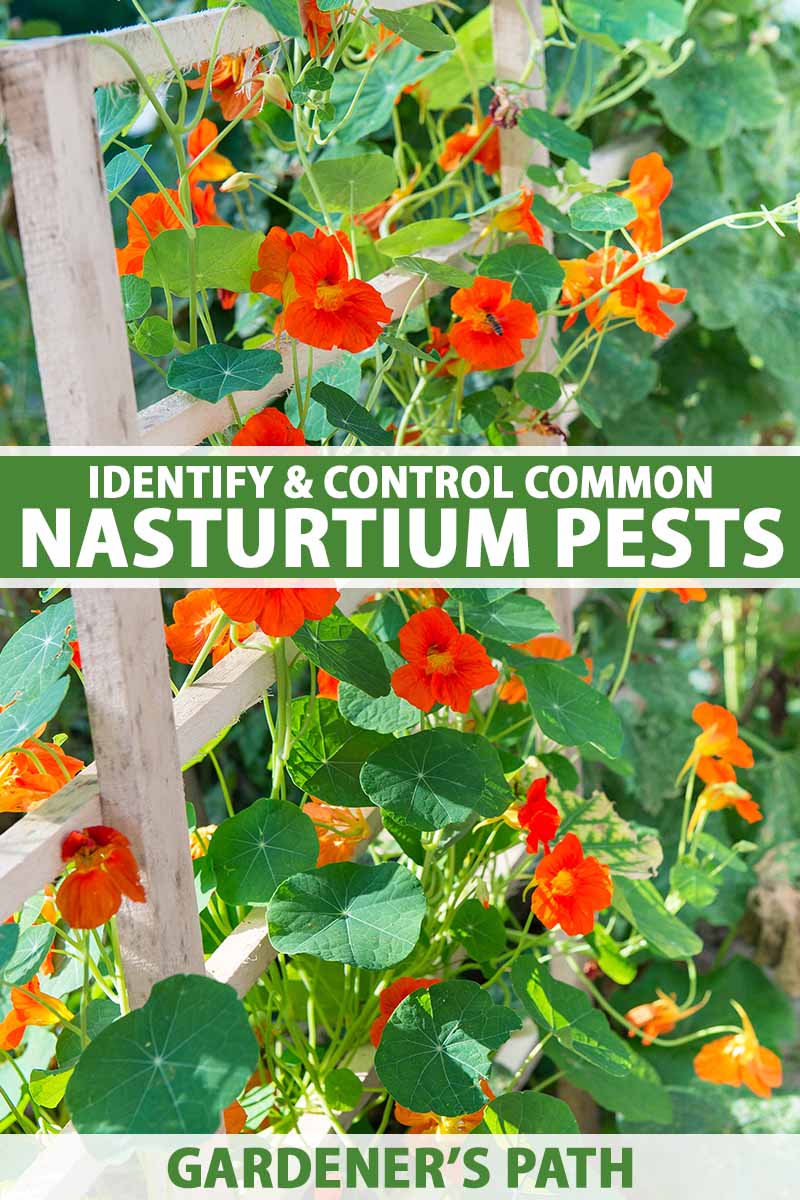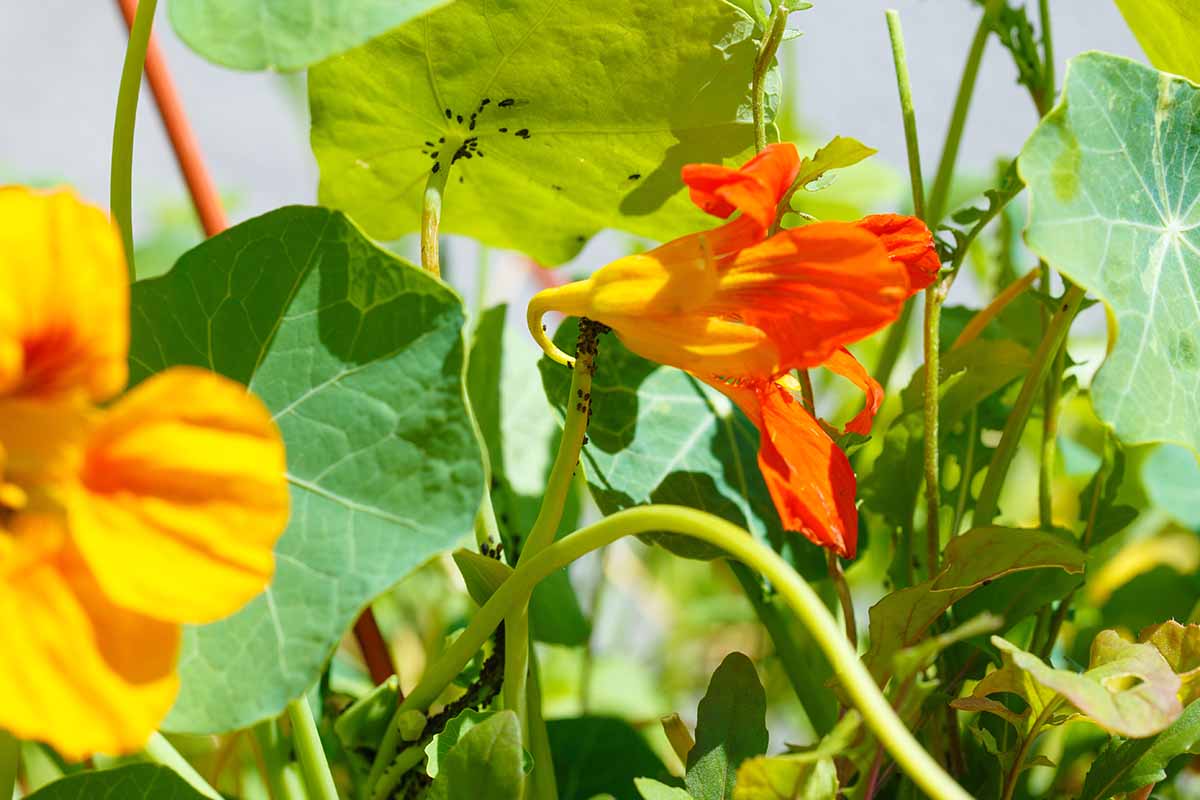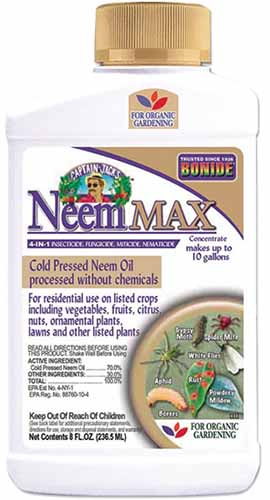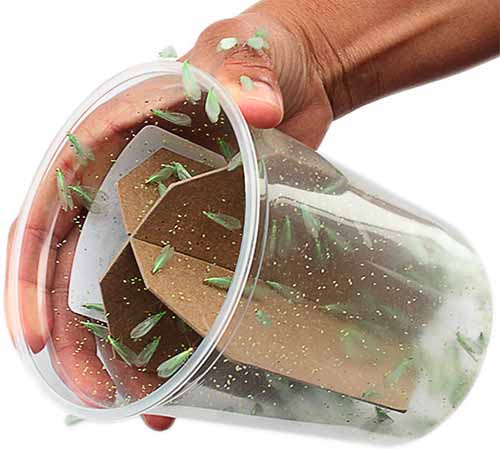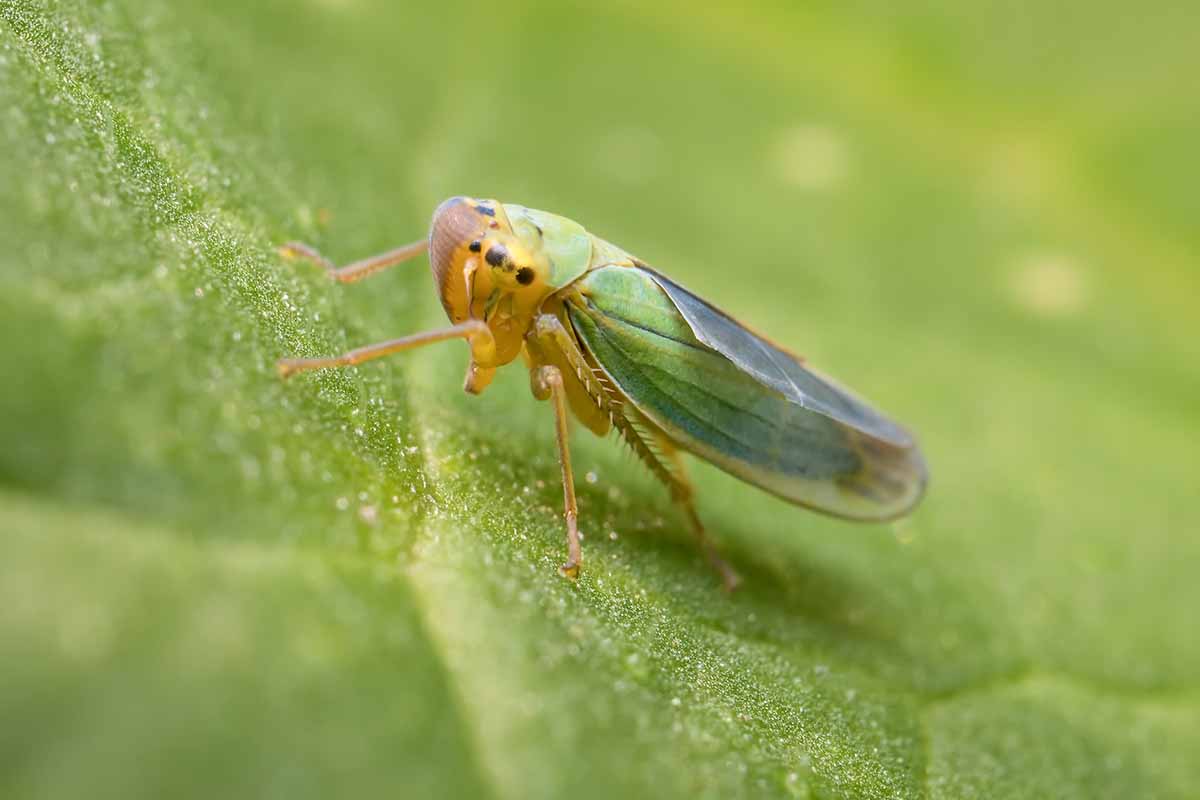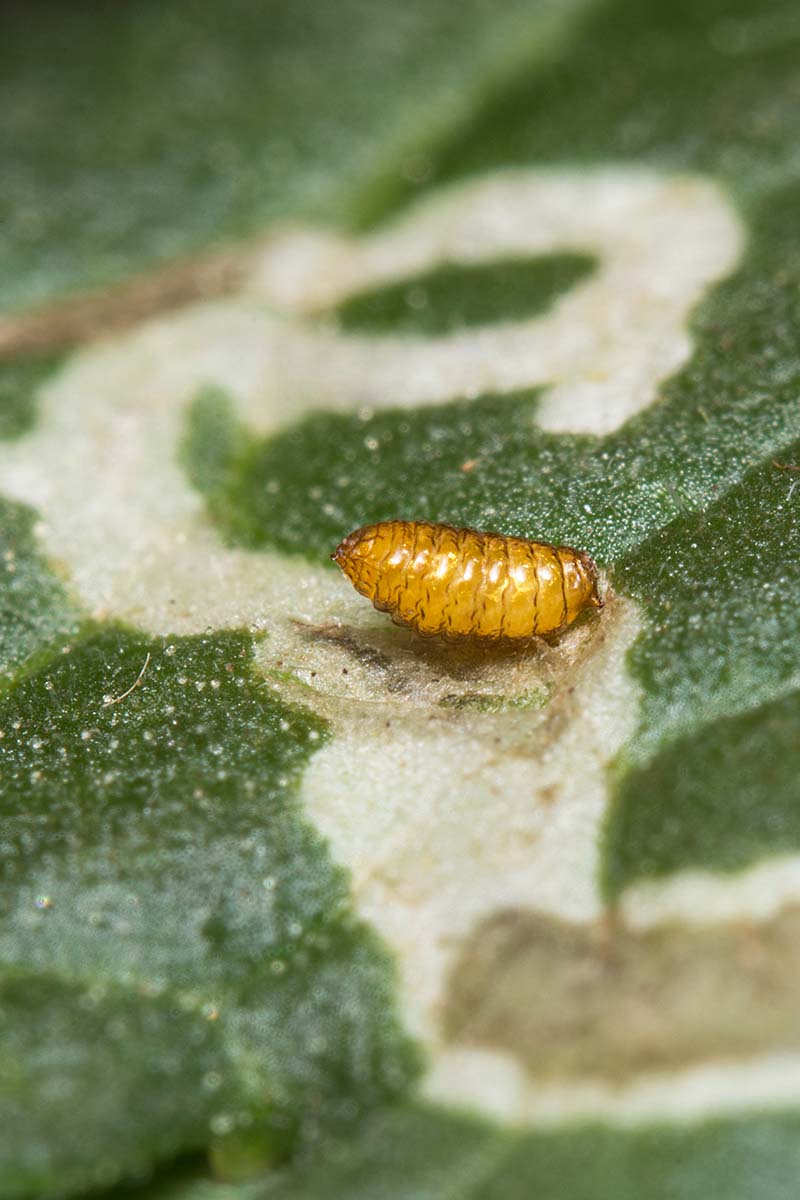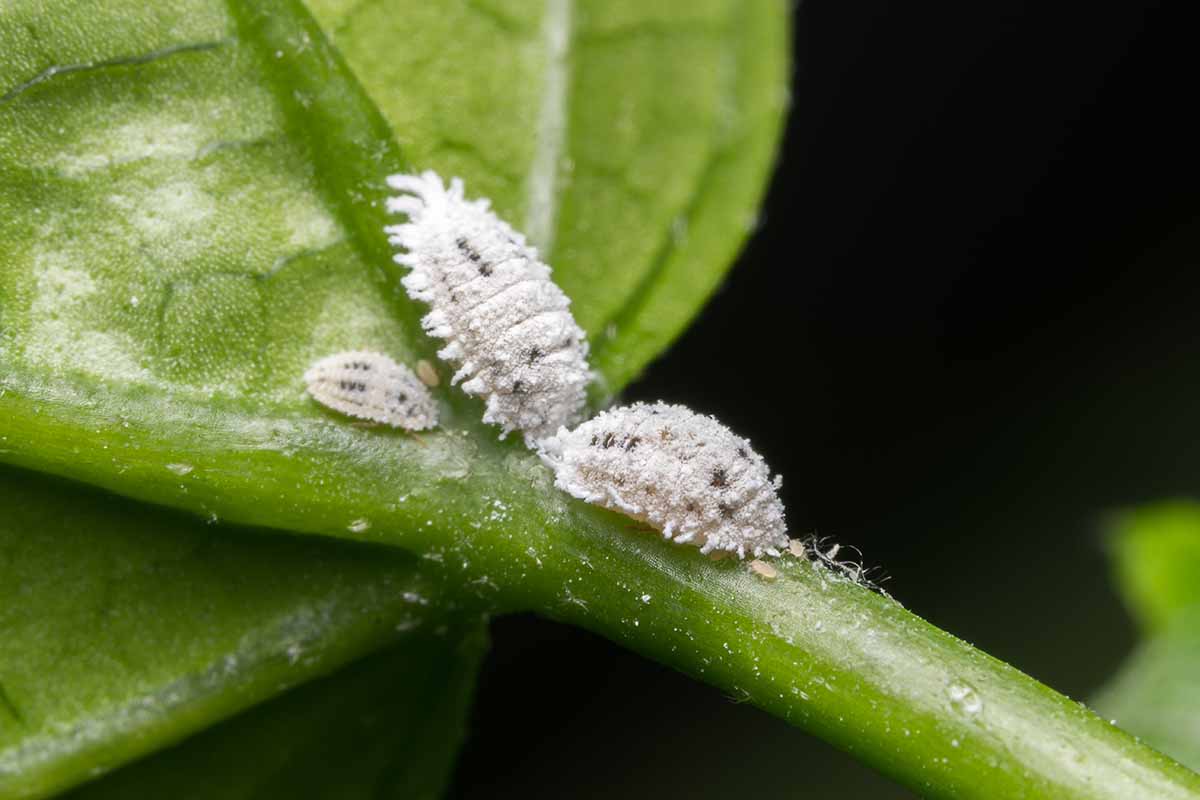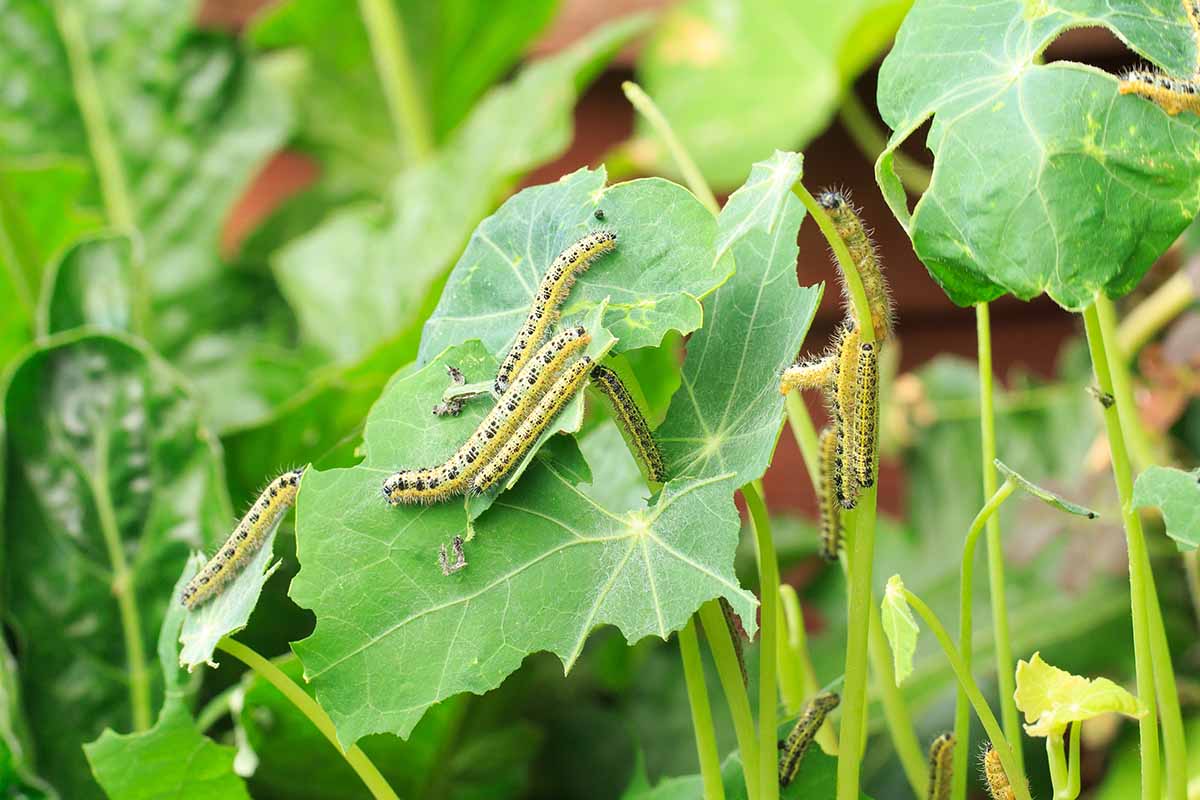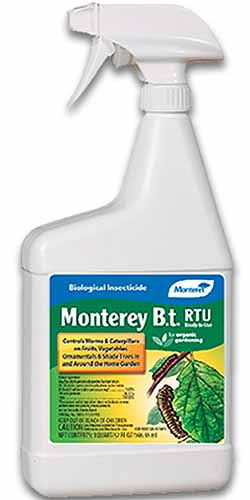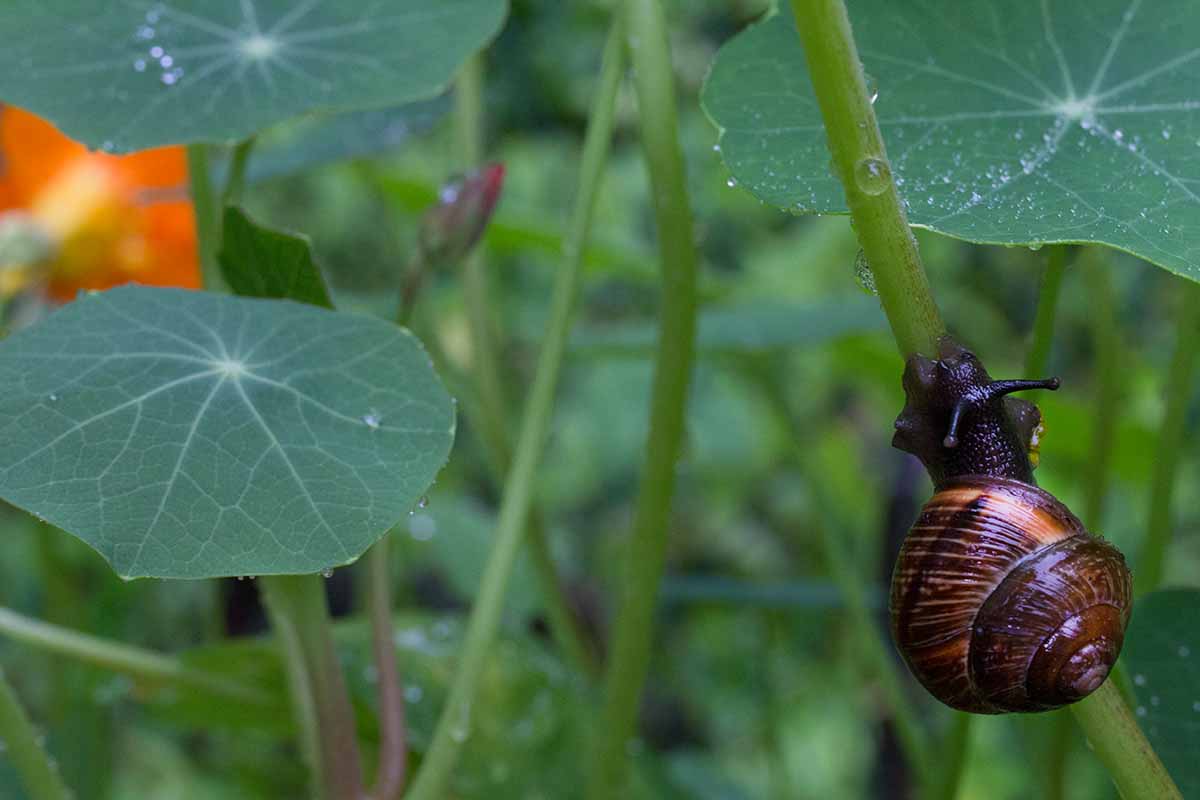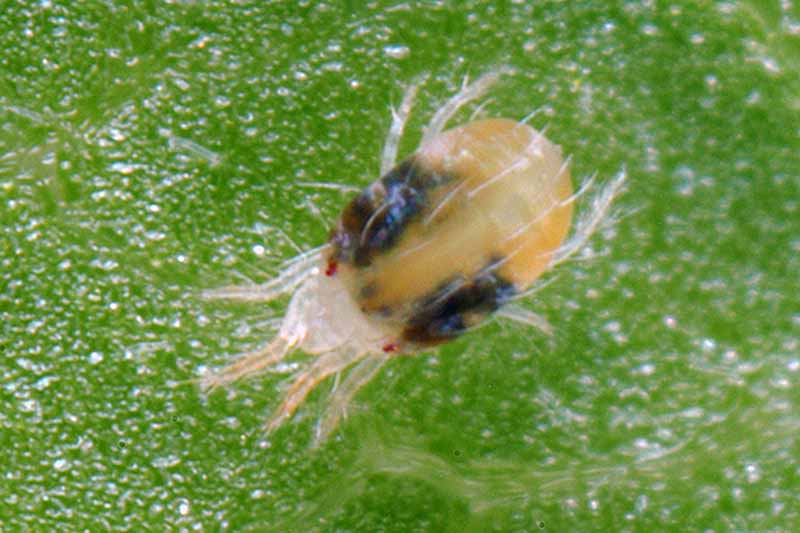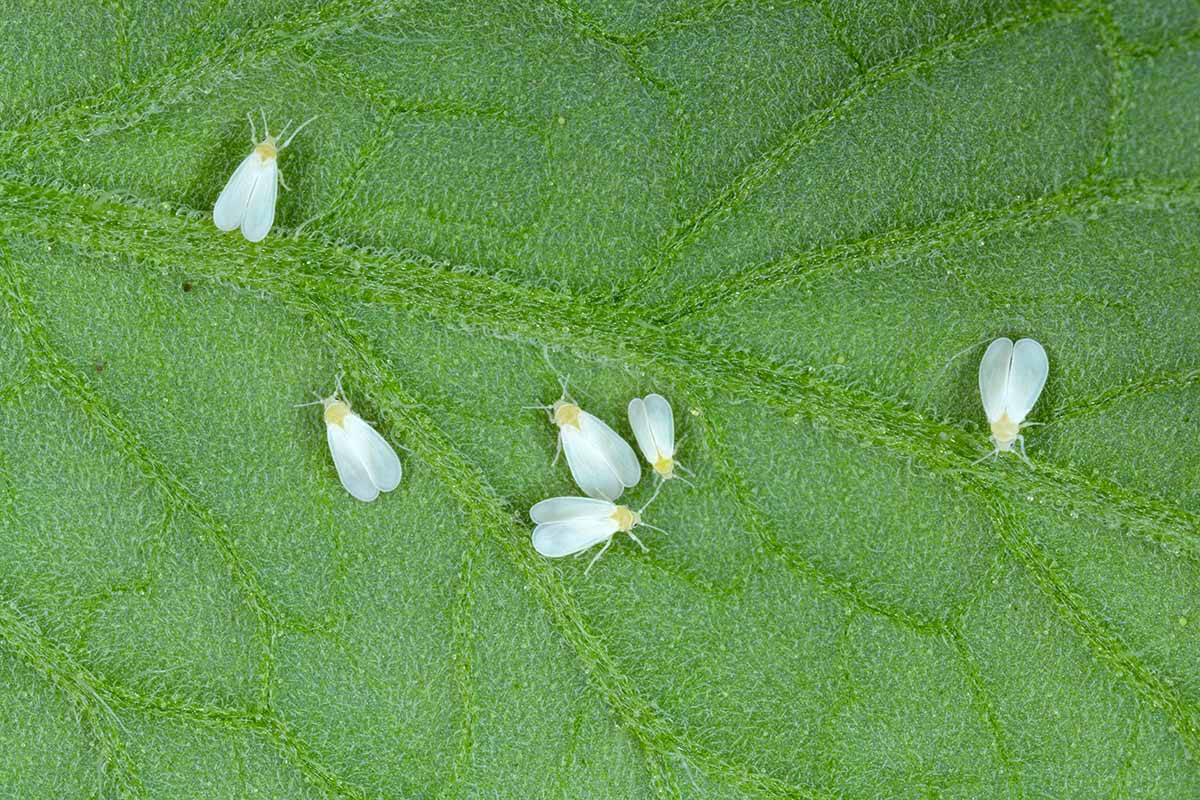We link to vendors to help you find relevant products. If you buy from one of our links, we may earn a commission. These plants may have one of three growth habits:
Dwarf BushyClimbingSemi-Trailing
Our guide to growing nasturtiums has everything you need to know to cultivate plants. This article discusses how to recognize and manage common nasturtium pests. Here’s what we’ll cover: Let’s get started! When growing nasturtiums, it is likely that you will spot one or more of the following kinds of pests in the garden. Let’s find out what they look like and how to manage them. We’ll examine nine varieties you may face in the garden.
1. Aphids
Some of the most common garden pests, aphids prefer cool, wet weather and lush foliage. These tiny sap-suckers deposit yellowish or blackish eggs on the undersides of the leaves. If you can, lift them off with your fingernail and drop them into an old container with a squirt of dish detergent and a couple of cups of water. Depending on the type, newly hatched nymphs and adults may be black, brown, gray, green, red, or yellow. The species most likely to prey upon Tropaeolum are:
Black Bean, Aphis fabaeMelon, Aphis gossypiiGreen Peach, Myzus persicae
Regularly examine your plants for signs of aphids. When they begin to multiply, they stack one on top of the other and cover stems, leaves, and even flowers. You may also see an unusual number of giant ants. The big-headed ant, Pheidole megacephala, has a symbiotic relationship with these sapsuckers, “farming” them, much like a cattle rancher herds, milks, and shelters. A strong spray with the hose may dislodge them. If not, you can try a mild solution of two and one-half tablespoons of mild dish detergent to one gallon of water for a sudsy solution to dispense from a spray bottle.
2. Flea Beetles
Adult flea beetles like hot, dry conditions. They look like beetles and jump like fleas, feeding on the undersides of leaves, creating “shot holes” straight through them. Here’s a neem oil product from Arbico Organics: BONIDE® Captain Jack’s™ Neem Max is available from Arbico Organics in eight-ounce or 16-ounce bottles of concentrate. BONIDE Captain Jack’s Neem Max Organic and biodegradable, this cold-pressed neem oil dilutes easily in water for foliar spray application. Note that neem oil has a garlicky/sulfuric odor. Consider planting diverse flowering flora to attract beneficial insects that feed on aphids. You can also purchase “good bugs” that feed on aphids, like lacewings and soldier bugs, to add to the landscape to supplement your efforts. Green Lacewing Adults Adult lacewings that are ready to lay eggs and devour pests are available for purchase from Arbico Organics. And finally, aphids readily reproduce under nitrogen-rich conditions, so skip the fertilizer altogether and grow in “lean” soil to deter them. If you want to feed your plants, choose a slow-release product low in nitrogen. Our guide to aphids has further details. Their chewing results in dead craters of plant tissue that merge, leaving only veins and a skeletal appearance. If you see whitish-gray eggs in the soil near your plants, you may have one or both of the following: Striped Flea Beetle, Phyllotreta striolata Crucifer Flea Beetle, Phyllotreta Cruciferae The striped species is black with yellow markings; the crucifer is black. The worst damage occurs during a plant’s seedling phase when it is too vulnerable to withstand the stress of beetle feeding. Mature plants may suffer only minor damage. To treat, attack the beetles in the grub stage with a soil-level application of diatomaceous earth per package instructions. And while pyrethrin insecticides are effective against flea beetles, they should not be used on plants intended for consumption. Consult our guide to flea beetles for more information on addressing them.
3. Leafhoppers
There are many types of leafhoppers (Cicadellidae spp.), that feed primarily on the upper surfaces of foliage, leaving a series of white speckles in the places where they have consumed chlorophyll. They are active during the day and night, and prefer sunny locations, heat, and dryness. These pests have a streamlined form. Their arrow-like profiles and invisibly tucked wings are perfect for rapid leaping from leaf to leaf. Leafhoppers can do considerable damage. You can apply neem oil, but treatment is generally ineffective, as they are highly mobile insects.
4. Leaf Miners
The cabbage leaf miner, aka the serpentine leaf miner (Liriomyza brassicae) is the larvae of a black and yellow fruit fly. With a preference for warm weather, adult females deposit chalky white eggs on the surface or underside of the leaves. If you can remove and destroy them, you may be able to head off an infestation. When the eggs hatch, the larvae feed by tunneling inside the leaves, forming whitish-tan serpentine patterns as they travel back and forth, consuming chlorophyll and excreting waste. Because insecticide resistance is common with leaf miner species, it is often best to pick off and destroy affected foliage instead of applying a product for treatment. You can learn more in our guide to leaf miners.
5. Mealybugs
Mealybugs (Pseudococcidae spp.) are soft-bodied insects like scale bugs but without a hard waxy shell. They like warm, moist environments in which to feed on plant juices. White and leggy, they tend to mass together into piles, giving the appearance of a patch of spilled flour. You may have to inspect closely to find mealybugs, as they like to cluster in nooks and crannies, where they feed on plant tissue and leave a waxy excretion in their wake. Females lay pink or yellowish eggs in waxy “ovisacs” that look like a gooey mass stretched along a stem. You may be able to pick them off or dislodge them with a strong spray of water. If unsuccessful, treat with organic neem oil. Natural predators of mealybugs include ladybugs and lacewings. In addition to foliage-dwelling mealybugs, some types live in the ground. If you find them near the bases of plants, treat the soil with an application of food-grade diatomaceous earth. For more information, consult our complete guide to mealybugs.
6. Moth Caterpillars
Caterpillars have the potential to defoliate plants in short order when they hatch en masse during the spring and summer with voracious appetites. Three to know are:
Cabbage Looper, Trichoplusia niGreenhouse Leaftier, Udea rubigalisImported Cabbage Worm, Pieris rapae, aka cabbage white caterpillar
You may notice the cabbage looper moth’s yellowish or greenish eggs on the top or underside of a leaf. It is very active on spring nights. Mature caterpillars have green bodies and well-defined white side stripes. We call them inchworms because of the looping gait that gives the appearance of measuring each stride. Caterpillars become mottled brown moths with silver markings on the wings. The imported cabbageworm or cabbage white moth is one of the most common nasturtium pests. It is active during spring days, laying white to yellowish eggs on the undersides of leaves. If you turn a leaf over to look, they seem to stand at attention. Mature caterpillars have green bodies with faint dotted yellow side stripes. Adult cabbage moths are whitish-yellow and have the same hearty appetite as in their youth, capable of doing extensive harm. The greenhouse leaftier moth is active at dusk in the spring. Especially prevalent on celery, this caterpillar lays eggs on leaf undersides. They are flattish and white before gradually taking on a sheen. Mature caterpillars are green with a dark green band near the back, white side stripes, and a yellow underside. Mature moths are brown with black eyes, spots, and stripes. They bind the leaves they feed on with silken thread, like spiders. Feeding on the underside of the leaves can render them mere skeletons. And while its primary host is corn, the nasturtium is a secondary host. Our guide to using Bt has details for using it in the home garden. Here’s a product to try: Monterey Bt Liquid Apply Bt when the caterpillars are first observed, preferably during the first or second “instar,” or reproductive cycle. Monterey Bt Liquid is available from Arbico Organics in 32-ounce RTU and 32-ounce hose-end RTS options for a ready-mixed hose spray or spray bottle application. Another type of caterpillar you may come across is the corn earworm, Helicoverpa zea. The adult moth is active on late summer evenings and nights. The females lay yellow eggs that shade gray. Mature caterpillars are brown, tan, or greenish with brown striping and black spotting. Mature moths are yellowish-brown with dark spotting and striping. You may read that Bt is effective against the corn earworm, but per the pest management experts at Arbico Organics, it is not. If your nasturtiums have corn earworms, remove the eggs and handpick the worms as best you can. Remove and destroy severely affected foliage. Resort to pyrethrin insecticides ONLY if you do not intend to consume your plants.
7. Slugs and Snails
Slugs and snails are members of the Gastropod family. They feed clandestinely on lush, wet foliage after the sun goes down and the day’s heat dissipates. Many products are available on the market to trap these pesky foliage chewers. There are also numerous home remedies. Some folks swear by luring them to bloat in shallow dishes of beer, spreading salt to dehydrate them upon contact, and encircling plants with sharp eggshells to impale them. Yikes! See our complete guide to slug and snail management to plan a course of action.
8. Spider Mites
If it’s hot and dry, be on the lookout for spider mites all summer long. Two-spotted spider mites, Tetranychus urticae, are minute yellow arachnids with two black spots. Like other mite species, they spin fine webs and they may be hard to notice – until they feed on plant juices, causing yellow and brown spots to form on the foliage. Usually, you can wash them away with a garden hose; however, you may want to follow up with an application of horticultural neem oil. Be sure to spray both the tops and undersides of the leaves. If you live in a humid region, you are far less likely to encounter this pest. See our guide to dealing with spider mites for more information.
9. Whiteflies
Whiteflies (Aleyrodidae spp.), are flying insects with yellowish bodies and waxy white wings. Females lay white eggs as they feed, depositing them in circular patterns on the backs of leaves. They prefer hot, dry, dusty conditions. Two types that may feed on nasturtium foliage are:
Giant Whitefly, Aleurodicus dugesii Greenhouse Whitefly, Trialeurodes vaporariorum
And while you may not notice the eggs or even the translucent nymphs, it’s hard to miss the adults. When disturbed, they lift in unison like a puff of white powder. Whiteflies feed on leaf tissue with sapsucking mouthparts, leaving it speckled white, yellow, and brown as it dies. Try to dislodge the flies with a firm hose spray and remove severely infested foliage. Adults and nymphs exhibit resistance to pesticides, but organic neem oil is often effective. Our guide to the management of whiteflies has all you need to know to address an infestation. However, some folks grow these lovely flowers for another reason – to keep pests away from more highly prized plants, like roses, and edibles, like fruits, herbs, and vegetables. When interplanted among them, nasturtiums become valuable “trap crops.” In addition to drawing cabbage loopers away from brassicas and sidetracking aphids from melons, nasturtiums confuse pests. When carrot flies, Colorado potato beetles, cucumber beetles, Mexican bean beetles, and squash bugs encounter them, they fly off instead of infesting their hosts. This is why we say nasturtiums repel certain pests. And while they are a magnet for the nine pests discussed, nasturtiums benefit the landscape in another way. Beneficial insects – like hoverflies, lacewings, and ladybugs – swoop in to feed on sapsucking pests, helping to eradicate them and increasing the genetic diversity in the landscape by pollinating as they do so. Undesirable sap-sucking and chewing insects are often vectors of plant diseases. And those that excrete “honeydew” – like aphids, leafhoppers, and mealybugs – make plants vulnerable to fungal conditions, like sooty mold. Find more about the diseases that affect nasturtium plants here. If you have to treat pests, use safe methods for edibles and rinse flowers and foliage thoroughly before consumption. And at season’s end, clear all foliar debris to inhibit unwanted insects from wintering over so they can create havoc again next year. Now it’s time to take out your garden journal and make a note of the benefits of introducing nasturtiums to your outdoor living space:
Beautiful colorsEdible flowers and foliageTrap crop and repellentAttractor of beneficial insects to support biodiversity
Next time you’re looking for a new plant to introduce to your outdoor living space, consider easy-to-grow, garden-friendly nasturtiums. Have you had trouble with pests on your nasturtiums? Let us know in the comments section below! If you enjoyed this guide and would like to learn more about nasturtiums, add these articles to your reading list:
15 of the Best Nasturtium VarietiesHow to Care for Nasturtiums in WinterShould I Deadhead My Nasturtium Plants?
